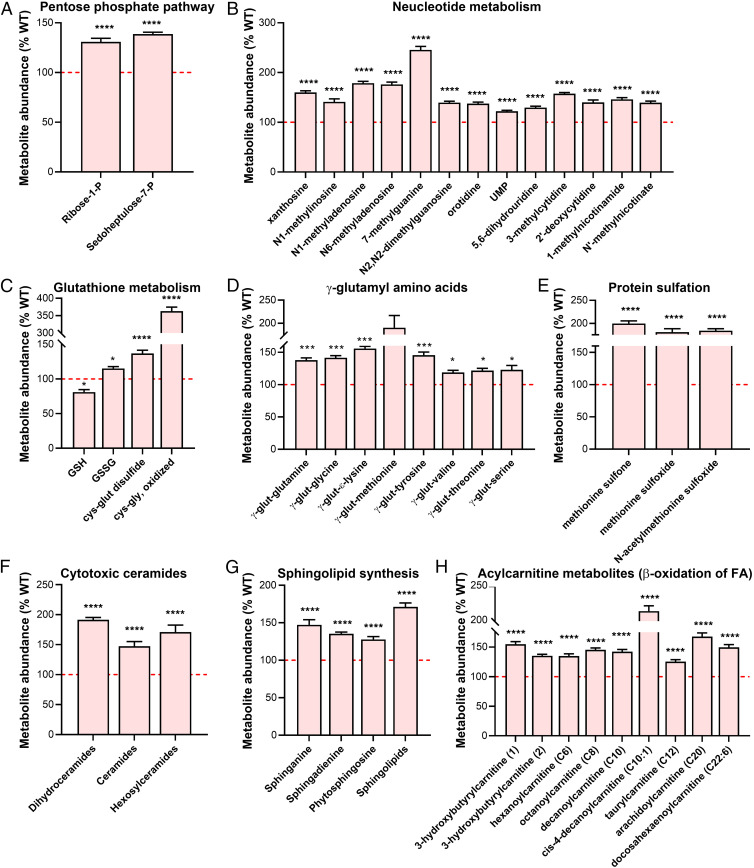Fig. 4.
RTBDN ablation up-regulates pentose phosphate pathway and nucleotide metabolism to meet the elevated need for free-radical scavenging, Percent changes in in the levels of pentose phosphate pathway, nucleotide metabolism, glutathione metabolism, free-radical markers, sphingolipid, and lipid metabolism intermediates in P45 Rtbdn−/− NR from WT control (marked by red dotted line at 100) are shown. (A) End products of pentose phosphate pathway. (B) Metabolic intermediates of nucleotide metabolism. (C) Reduced GSH and oxidized toxic intermediates of glutathione metabolism. (D) Amino acids modified by γ-glutamyl. (E) Sulfonated methionine residues. (F) Toxic ceramide metabolites. (G) Intermediates of sphingolipid biosynthesis. (H) Intermediates of β-oxidation of fatty acids marked by acylcarnitine. Each group has n = 6–9 independent preparations. Two-way ANOVA was used to determine significance, with *P < 0.05, ***P < 0.001, and ****P < 0.0001. (UMP, uridine monophosphate; GSH, reduced glutathione; GSSG, oxidized glutathione.)

